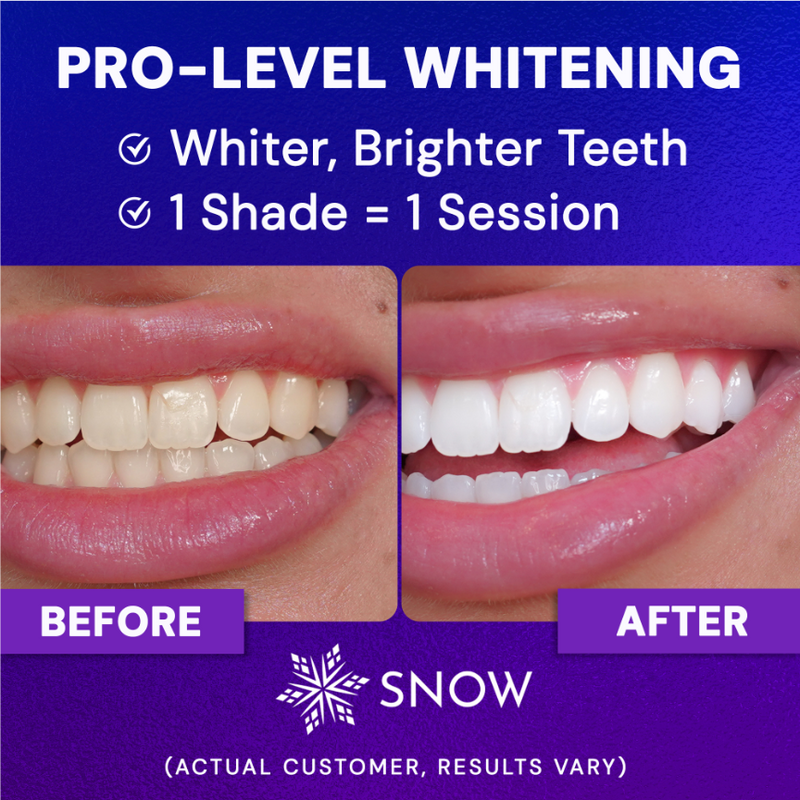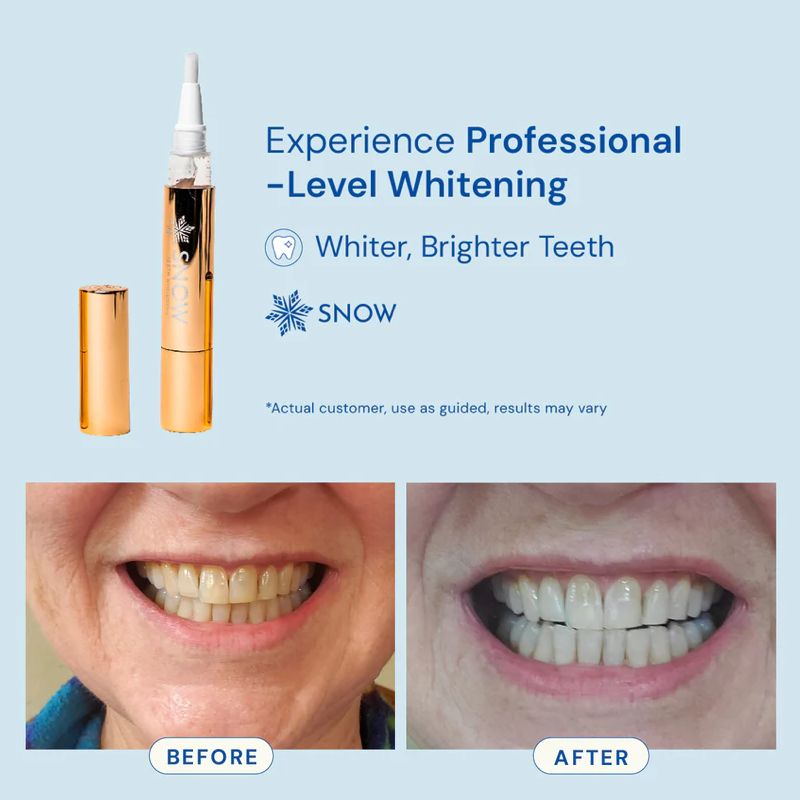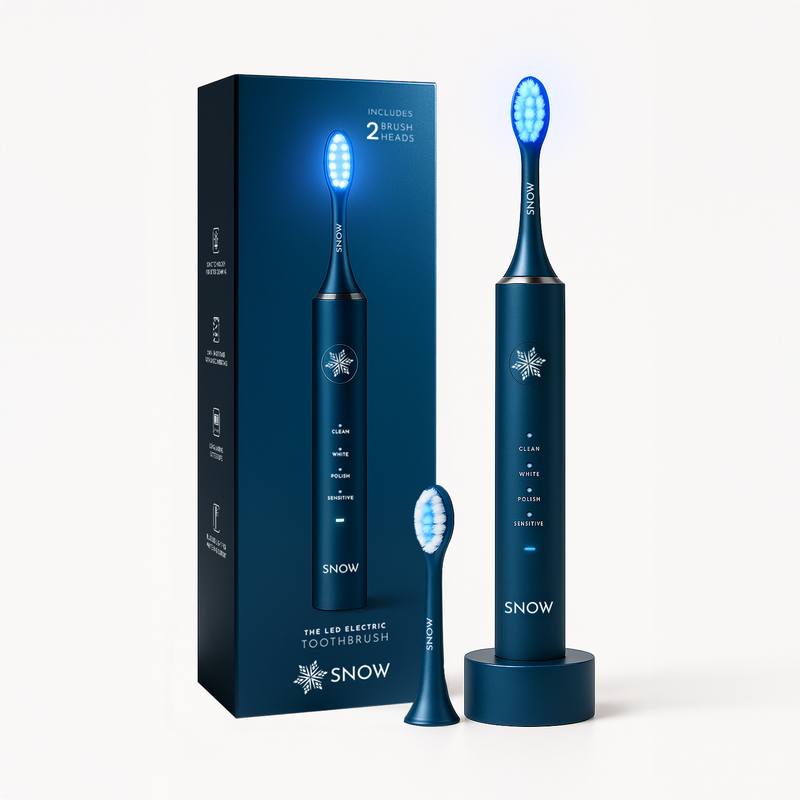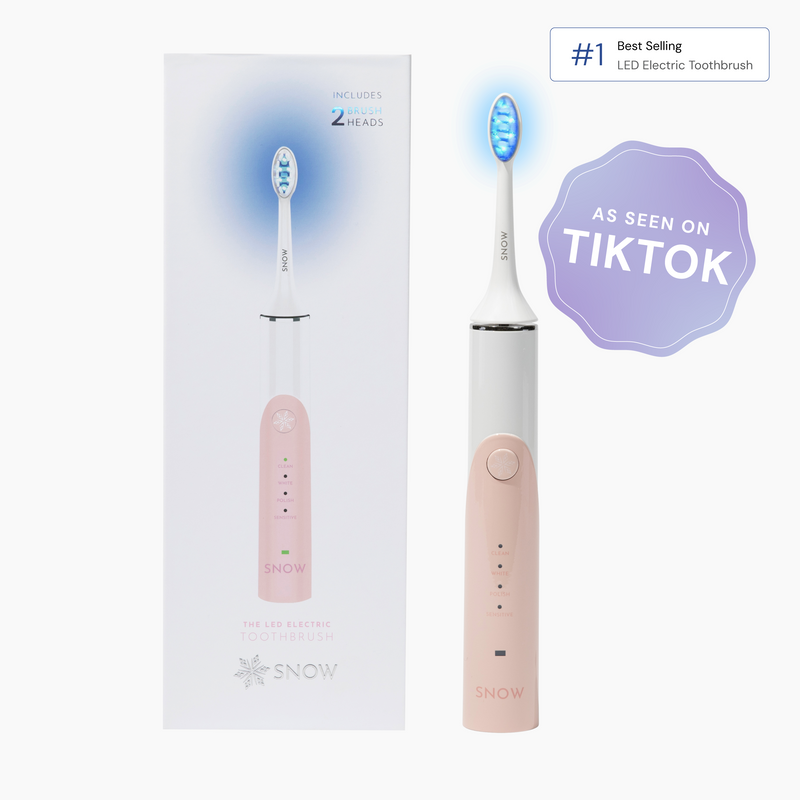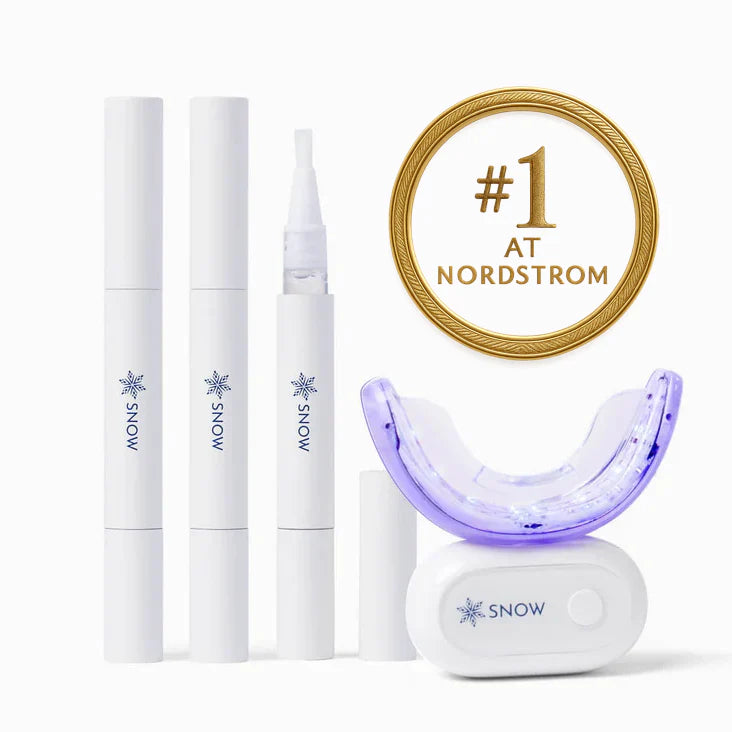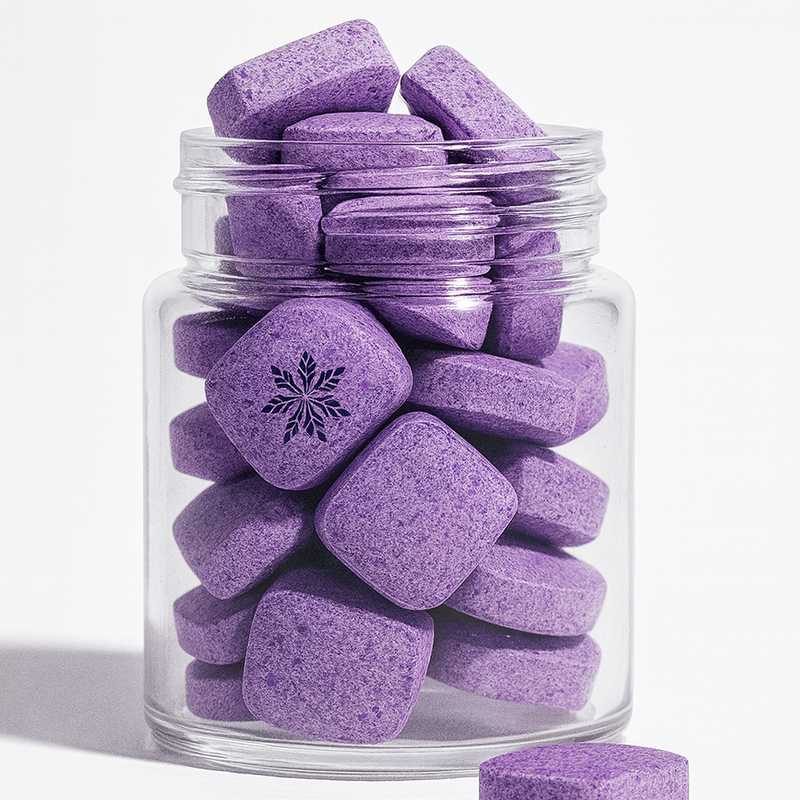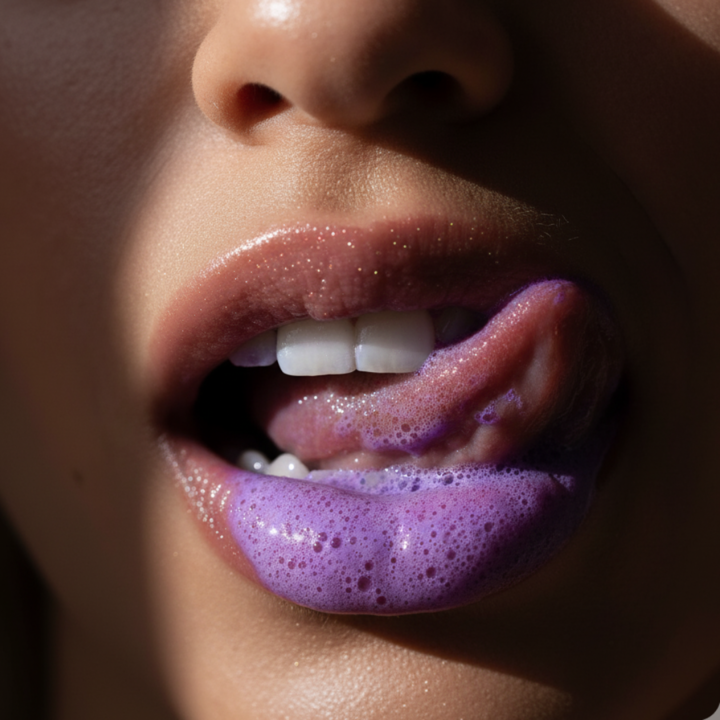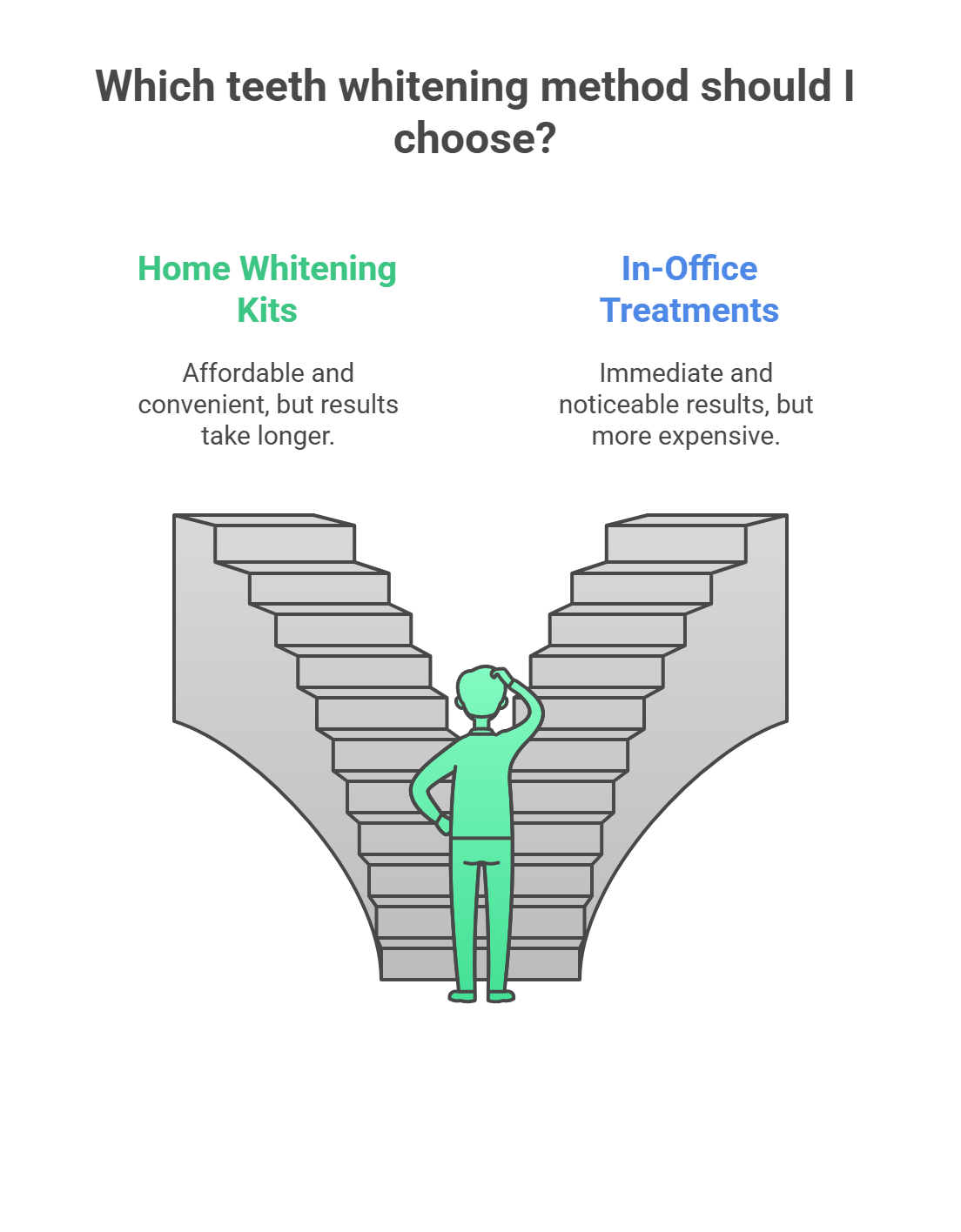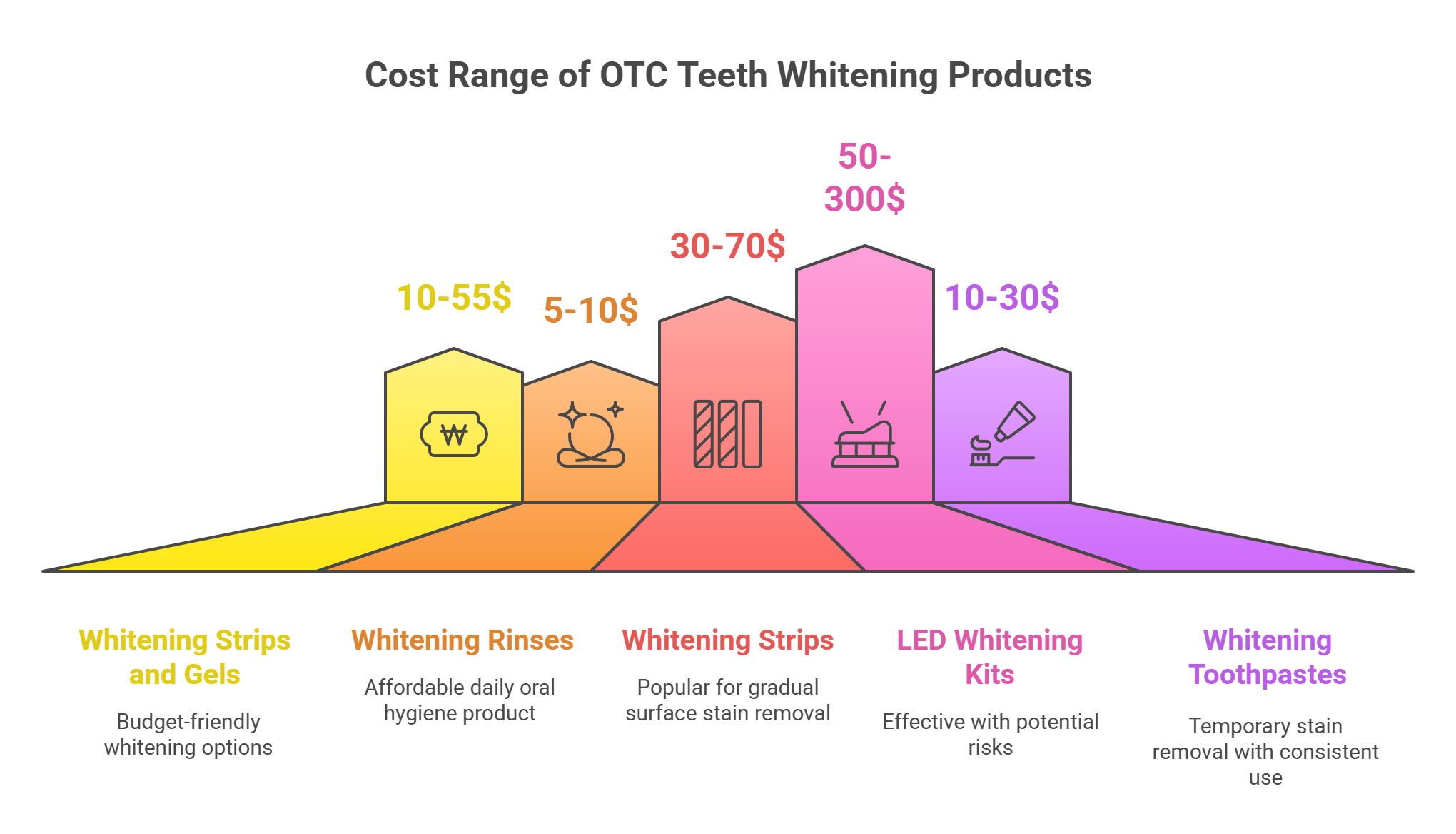Teeth whitening can cost anywhere from $10 for basic over-the-counter products to $1,000 for advanced professional treatments. With so many options available, it’s essential to understand what you're paying for—and why. This guide provides a clear, unbiased breakdown of the different teeth whitening methods, their effectiveness, and the real costs involved. Whether you're looking for quick in-office results or a budget-friendly at-home solution, you'll find the information you need to make a confident, well-informed decision.
Key Takeaways
-
Teeth whitening costs vary significantly, with professional treatments ranging from $300 to $1,000, while over-the-counter products cost between $10 and $55.
-
Professional in-office treatments are the most effective, capable of lightening teeth by up to eight shades in one session, whereas home whitening kits and OTC products are more affordable but take longer to show results.
-
Most dental insurance plans do not cover teeth whitening, but financing options are available through dental clinics to help manage costs.
Overview of Teeth Whitening Methods and Their Costs

Teeth whitening options vary significantly in both method and price.
At the high end, in-office professional treatments—performed by a dentist—can cost up to $1,000 per visit. These procedures use high-concentration bleaching agents and advanced technologies, often delivering results of up to eight shades lighter in a single session.
At the other end of the spectrum, over-the-counter (OTC) products like whitening strips, gels, and toothpastes are much more affordable, typically priced between $10 and $55. While convenient, these products contain lower concentrations of active ingredients and generally require more time and consistent use to see noticeable results.
In between, dentist-provided take-home kits offer a balance of affordability and effectiveness. These kits usually include:
-
Custom-fitted trays for precise application
-
Professional-grade whitening gels
-
A treatment period of 1 to 2 weeks
-
A cost range of approximately $100 to $600
Although they take longer than in-office treatments, many users achieve comparable results with proper use and guidance.
With such a wide range of options, understanding the cost, effectiveness, and time commitment of each method is key to choosing the right whitening solution for your needs and budget.
Professional In-Office Teeth Whitening Treatments
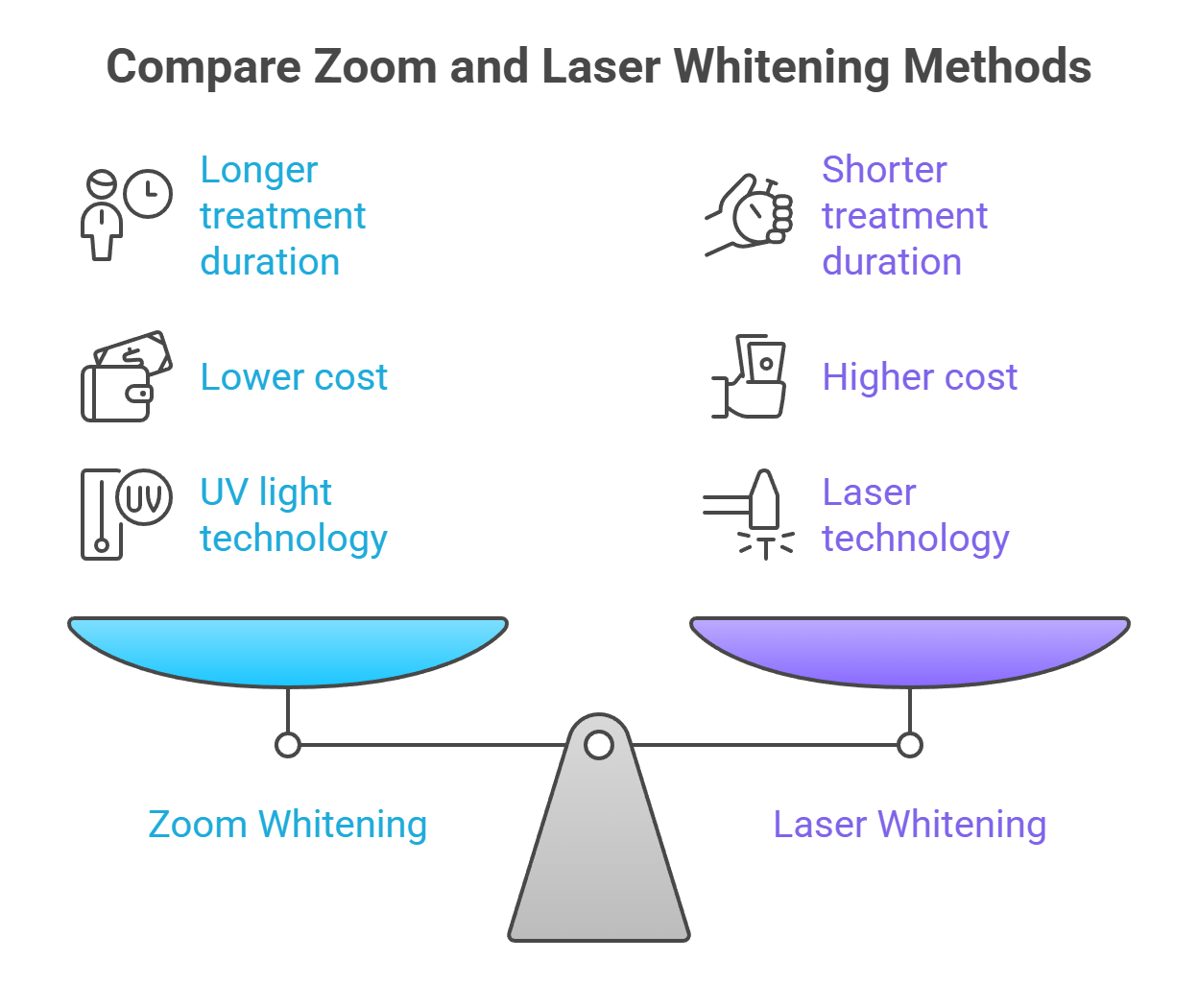
Professional in-office teeth whitening treatments are often chosen for its speed and effectiveness. These treatments are performed by dental professionals using high-concentration whitening agents and advanced technologies like LED or laser lights. They can lighten teeth by up to eight shades in a single session, making them ideal for those seeking fast, dramatic results.
Key Benefits:
-
Whitening gel is applied directly by a trained professional.
-
The process is carefully monitored for safety and comfort.
-
Technologies such as Zoom or laser whitening enhance results.
-
Suitable for people with sensitive gums or weakened enamel.
While in-office treatments are highly effective, it's important to understand that no single method is universally superior. All whitening approaches—including professional, at-home, and combined methods—have been shown to successfully lighten tooth color. Notably, at-home treatments with custom trays may offer better long-term results with lower chances of color relapse, although they typically take longer to reach full effect.
Choosing the right method depends on your priorities—whether it's speed, longevity, sensitivity, or convenience.
How It Works
Zoom Whitening
This popular method uses a hydrogen peroxide gel, activated by a UV or LED light. The light speeds up the chemical reaction, allowing the whitening agents to break down stains in the enamel. A typical session lasts under 90 minutes and includes:
-
A pre-treatment cleaning
-
Gel application
-
Three to four rounds of light activation (around 15 minutes each)
Laser Whitening
Laser whitening also uses a bleaching gel, but the gel is activated by a concentrated blue laser, which penetrates more deeply for faster results. Sessions usually take 60–90 minutes, with many patients seeing noticeable improvement after just one visit.
Both options are highly effective, offering immediate and visible whitening with minimal downtime.
Cost Breakdown and What Affects It
Professional in-office whitening typically costs between $300 and $1,000, depending on several factors:
-
Type of treatment: Laser treatments often cost more than Zoom due to their speed and intensity.
-
Location and provider: Prices vary by region and clinic reputation.
-
Pre-whitening care: Deep stains may require cleaning or polishing before treatment.
-
Dental restorations: If you have crowns, veneers, or fillings, you may need color adjustments to ensure even results.
Knowing these variables can help you plan and budget for your treatment with fewer surprises.
Home Whitening Kits from Dentists
For those looking for a more affordable and convenient way to whiten their teeth, dentist-prescribed home whitening kits offer a trusted, professional-grade solution. These kits typically include custom-made trays and professional-strength whitening gel, designed to deliver more consistent and safer results than over-the-counter products.
The average cost of these take-home kits ranges from $375 to $500, depending on the gel concentration and your provider’s pricing.
How Custom At-Home Whitening Kits Work
To use the kit, you’ll wear trays filled with bleaching gel for 1 to 3 hours per day, over the course of about two weeks. The trays are custom-fitted to your teeth, ensuring even coverage and reducing the risk of gum irritation. While results take longer to appear than with in-office treatments, they can be equally impressive when used consistently.
Types of Custom Teeth Whitening Trays and Gels
Dentist-supervised whitening kits generally include:
-
Custom-Fitted Trays: These trays are molded to fit your teeth precisely, providing more effective and comfortable whitening. Costs typically range from $150 to $500, depending on the materials and the dentist’s fees.
-
Prescription Whitening Gels: These higher-concentration gels are stronger than those found in drugstore products. They may be used with trays or applied as a direct varnish to the teeth. For best results, many dentists recommend repeating the treatment every 6 to 12 months.
As mentioned earlier, choosing the right whitening method depends on your goals. These kits offer a flexible, professional-grade option for achieving a whiter smile at home.
Over-The-Counter Teeth Whitening Products
Over-the-counter (OTC) teeth whitening products offer a budget-friendly alternative to professional treatments and dentist-provided kits. These products include whitening strips, gels, toothpaste, and rinses, each varying in cost and effectiveness. Whitening strips and gels, for instance, range from $10 to $55, while whitening rinses are generally priced between $5 and $10.
While OTC products can produce results similar to professional treatments, they often require more time and applications to achieve the desired level of whitening. Additionally, the lower concentration of bleaching agents in these products means they may not be as effective at removing deep stains. Nevertheless, they remain a popular option for those looking to whiten their teeth without breaking the bank.
Whitening Strips and Paint-On Varnishes
Whitening strips are one of the most popular OTC whitening products, typically costing between $30 and $70 for a pack of 10-20 strips. These strips are applied to the teeth for 5-30 minutes daily over 1-2 weeks, gradually whitening the teeth by removing surface stains. While effective, improper use can lead to uneven results and gum irritation.
Paint-on varnishes are another option, involving:
-
The application of a whitening gel to the teeth using an applicator brush or pen.
-
The gel contains peroxide and forms a hard film on the teeth.
-
This film helps to remove stains and maintain a brighter smile.
For best results, paint-on varnishes should be used for upkeep every 4-6 months.
LED Whitening Kits and Whitening Toothpastes
LED whitening kits have gained popularity for their effectiveness and ease of use. These kits, which generally cost between $50 and $300, involve applying a special coating gel to the teeth and then activating it with a blue LED light. Users typically need to use the kit for 20-30 minutes daily over 2-4 weeks to see visible results. However, potential risks include gum irritation, oral skin burns, and enamel damage if not used correctly.
Whitening toothpaste is another common OTC product, containing mild abrasives and bleaching agents like peroxides and whitening agents. While these toothpastes can help remove surface stains and maintain a brighter smile, their effects are generally temporary and require consistent use 2-3 times daily for 3-6 weeks to see noticeable changes.
Quick Comparison Table
The table below offers a quick side-by-side comparison to help you evaluate the cost, timeline, and ideal use case for each method.
|
Method |
Cost Range |
Treatment Time |
Results Timeline |
Best For |
|
In-Office Whitening |
$300 – $1,000 |
One session (60–90 minutes) |
Immediate (up to 8 shades lighter) |
Fast results, deep stains, dentist supervision |
|
Dentist-Provided Home Kits |
$100 – $600 |
1–3 hours/day for ~2 weeks |
Gradual, visible in 1–2 weeks |
At-home convenience with professional-level results |
|
Over-the-Counter Products |
$5 – $300 |
Daily use for 1–4 weeks |
Gradual, mild to moderate results |
Budget-friendly, surface stains, basic maintenance |
Factors Affecting Teeth Whitening Costs

Teeth whitening costs can vary widely depending on several important variables. Understanding these factors can help you make informed decisions and budget appropriately for your treatment.
1. Geographic Location
Where you live can significantly impact pricing.
-
In urban areas, treatment costs are typically higher due to increased overhead and demand.
-
In smaller towns or rural regions, pricing may be more competitive and affordable.
If you're located in a high-cost area, it may be worth comparing providers in nearby regions.
2. Dental Provider and Practice Reputation
The expertise of your dentist and the type of clinic you choose will influence the overall cost.
-
Clinics with advanced technology, strong reputations, or premium services may charge more.
-
However, a highly experienced provider may also offer safer procedures and more tailored results.
Choosing a qualified professional ensures you're investing in quality and care.
3. Initial Condition of Your Teeth
The current state of your teeth plays a key role in treatment intensity and cost.
-
Deep or long-standing stains may require more sessions or stronger agents to achieve desired results.
-
Mild discoloration typically responds faster to treatment, potentially reducing the overall expense.
An initial consultation can help determine how much treatment your teeth may need.
4. Number of Sessions Required
Some whitening goals can be achieved in a single appointment, while others may take multiple visits.
-
More severe staining or uneven coloration often requires additional sessions, increasing the total cost.
-
This is especially true for professional treatments like Zoom or laser whitening.
Your provider will recommend the appropriate number of sessions based on your unique case.
5. Type of Whitening Treatment Chosen
Not all whitening methods carry the same price tag.
-
Laser whitening generally costs more due to its speed and intensity.
-
Zoom treatments are slightly more affordable but still professional-grade.
-
Take-home kits and OTC products offer lower-cost alternatives with longer treatment timelines.
Your choice of method should reflect your goals, budget, and time preferences.
6. Ongoing Maintenance and Follow-Up Care
Maintaining a whiter smile involves periodic upkeep.
-
Many patients use at-home maintenance kits, touch-up treatments, or scheduled follow-ups every 6–12 months.
-
These ongoing efforts, while often necessary, can add to long-term whitening costs.
Regular maintenance helps extend the results of your initial treatment.
Insurance and Financing Options for Teeth Whitening
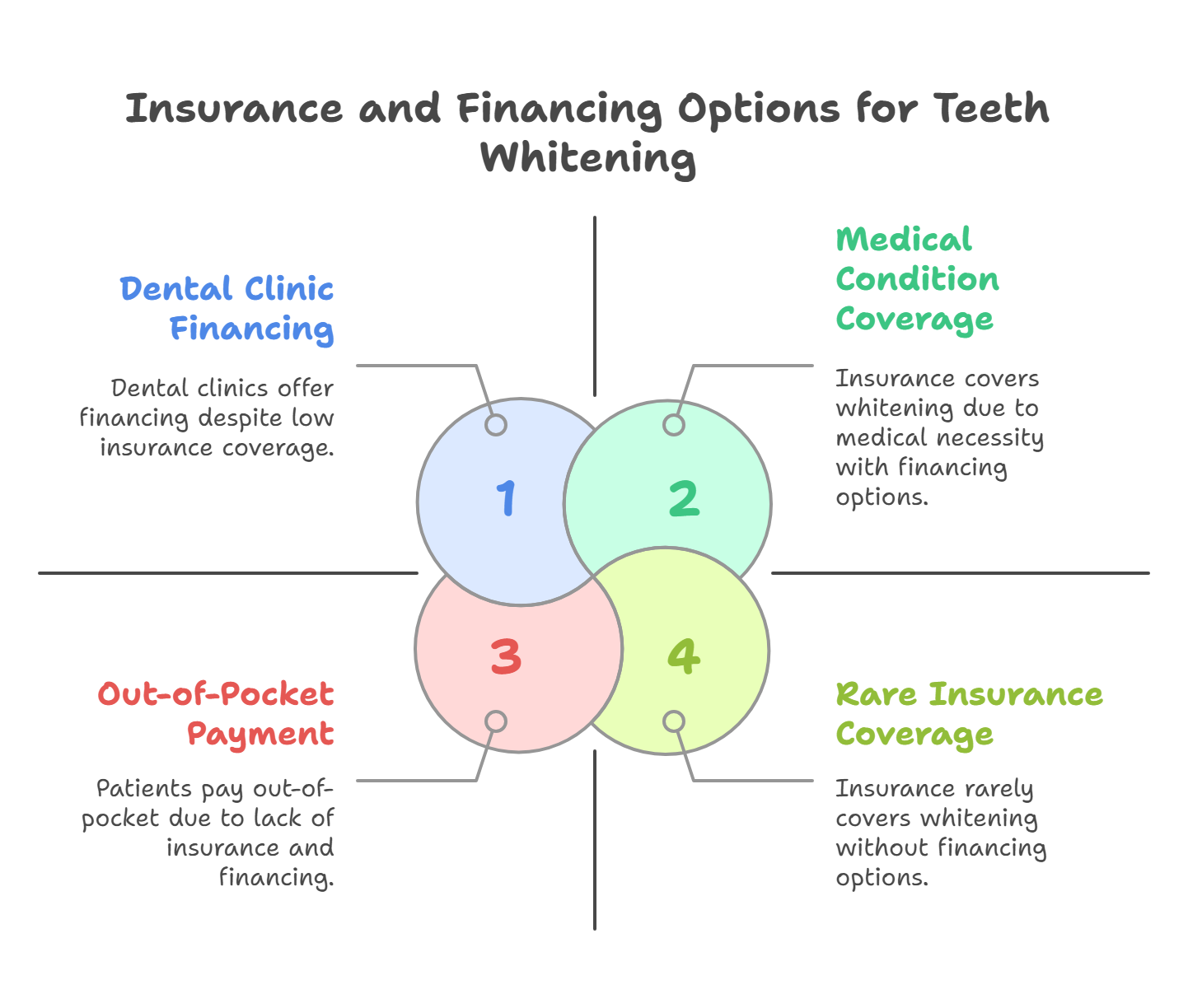
Understanding how insurance and financing apply to teeth whitening can help you plan more confidently. While cosmetic dental procedures like whitening are typically not covered by insurance, there are other ways to make treatment more affordable.
Does Dental Insurance Cover Teeth Whitening?
In most cases, dental insurance does not cover teeth whitening, as it is classified as a cosmetic procedure, not medically necessary treatment.
However, there may be exceptions. Some insurance plans might provide partial coverage if tooth discoloration is caused by a medical condition or treatment side effect. These cases are rare, but it’s always worth confirming with your provider.
Tip: Contact your dental insurance company directly to ask if any part of your whitening treatment might be eligible for reimbursement or special consideration.
Financing Options for Whitening Treatments
Although insurance usually won’t help with whitening costs, many dental practices offer financing plans to make treatments more accessible.
-
Some clinics provide interest-free or low-interest payment plans, especially for in-office procedures.
-
Third-party providers like CareCredit offer healthcare credit cards that can be used for cosmetic dentistry and paid off in installments.
-
Seasonal discounts or promotional offers may also be available at certain clinics.
These options allow patients to spread out costs over time, which is especially helpful for higher-end whitening methods or multi-session treatments.
Safety and Side Effects of Teeth Whitening
While teeth whitening can significantly enhance your smile, it’s important to be aware of the potential side effects and safety concerns. One of the most common issues is tooth sensitivity, which can occur during or after the whitening process due to the bleaching agents used. Additionally, gum irritation is a frequent side effect, especially when at-home whitening kits are used improperly. Sensitive teeth can also be a concern for some individuals undergoing this treatment.
Overuse or misuse of whitening products can lead to enamel damage, uneven results, and even gum burns. High-peroxide gels, in particular, can cause significant discomfort if not applied correctly. To minimize these risks, it’s crucial to follow the instructions carefully and consider consulting with a dental professional before starting any whitening treatment.
Longevity of Teeth Whitening Results
The longevity of teeth whitening results varies depending on the method used and your oral care habits. Professional in-office whitening treatments can last between one to three years with proper care. Maintaining good oral hygiene, avoiding staining foods and beverages, and not smoking can help prolong the effects.
At-home whitening kits from dentists typically provide results that last for six months to a year, while over-the-counter products generally yield results lasting two to six months. The natural aging process and lifestyle choices, such as diet and tobacco use, also play significant roles in how long your teeth will stay white after treatment.
How Much Does Teeth Whitening Cost Wrapped Up
Teeth whitening offers a range of options to suit different budgets and needs, from professional in-office treatments to over-the-counter products. While professional treatments provide the most dramatic and immediate results, at-home kits and OTC products offer more affordable alternatives. Understanding the costs, potential side effects, and longevity of each method can help you make an informed decision. Ultimately, the best teeth whitening method for you will depend on your specific needs, budget, and lifestyle. Whichever option you choose, a whiter smile is within reach, ready to boost your confidence and brighten your days.
Frequently Asked Questions
How much does it cost to whiten teeth at the dentist?
Professional teeth whitening usually costs between $300 and $1,000, varying based on the method used and the dentist's experience.
Is it worth paying for teeth whitening?
Teeth whitening can lead to side effects such as tooth sensitivity and gum irritation. Additionally, overuse may result in enamel damage and uneven coloration. However, professional whitening treatments provide significant and lasting improvements in tooth color, making them a worthwhile investment for many seeking a brighter smile.
How long will a teeth whitening last?
Teeth whitening results typically last one to three years for professional treatments, six months to a year for at-home kits, and two to six months for over-the-counter products. To maintain your bright smile, consider regular touch-ups and good oral hygiene practices.
How much would it cost to have your teeth whitened?
The cost to have your teeth whitened varies widely depending on the method chosen. Professional in-office treatments range from $300 to $1,000, dentist-provided home kits cost between $100 and $600, and over-the-counter products are available from $10 to $55.















































